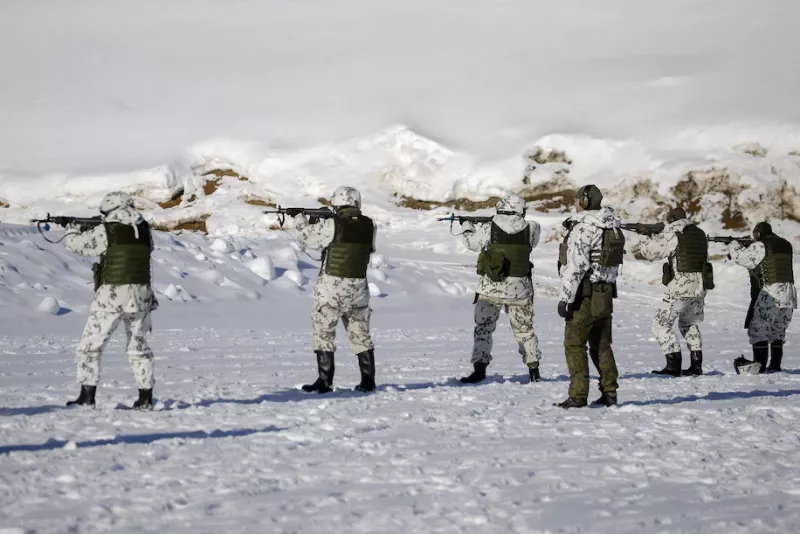
Less than three years ago, while President Donald Trump was threatening not to defend allies who didn’t pay enough for the privilege, French President Emmanuel Macron was lamenting the “brain death of NATO”. Things hardly seemed to improve when President Biden pulled U.S. troops out of Afghanistan (a NATO mission) after scant consultation with allies. As Kabul was falling, the Wall Street Journal ran an editorial headlined, “How Biden broke NATO”.
It turns out NATO is neither brain dead nor broken. The unprovoked Russian invasion of Ukraine has given the alliance a new lease on life, making it more politically united and militarily formidable than at any time since the end of the Cold War.
NATO stands as one against Russian barbarism in Ukraine. Even Germany is boosting its anemic defense spending and finally sending heavy weaponry to Ukraine. Other states are doing far more, with the United States, Poland, Canada and Britain leading the way in providing arms and ammunition. NATO is doubling the number of battalion-size “battlegroups” deployed to the front-line states of Eastern Europe, from four to eight, while the United States has increased its troop deployment in Europe from 80,000 to 100,000 personnel.
Now even Sweden and Finland, which have long maintained their neutrality, are declaring their desire to join the alliance. They are almost certain to be admitted, despite Turkish reservations and predictable hand-wringing from pseudo-“realists” about provoking the Russian bear.
With Sweden and Finland as members, NATO will hit the strategic jackpot. Admitting them to NATO isn’t an act of charity. They are formidable military powers in their own right that can substantially contribute to deterring further Russian aggression.
Finland has a massive artillery force of 1,500 cannons along with F-18 fighter jets, multiple launch rocket systems, armored howitzers, a variety of precision-guided munitions and other high-tech systems. Helsinki is increasing its defense spending and recently finalized a deal to buy 64 F-35 fighters. Its active duty military is small (only 22,000 personnel), but it maintains conscription and can quickly mobilize 280,000 troops — a far larger force than what Russia sent into Ukraine.
The Kremlin made all sorts of threats to dissuade Finland from joining NATO, but the Finns aren’t deterred. They remember the heavy losses they inflicted on Russian invaders in the 1939-1940 Winter War and are not impressed by the poor performance of the Russian military in Ukraine. Finland was even prepared for a cut off of Russian electricity that began on Saturday. Seeing that his bluster wasn’t working, Russian dictator Vladimir Putin was already backing away from his threats on Monday.
Sweden has roughly twice Finland’s population and a larger defense budget but a smaller military, with an active-duty force of 24,000 and only 31,800 reserves. But Stockholm is also increasing defense spending and expanding its armed forces. Its air force has ordered 204 of the domestically produced, top-of-the-line JAS 39 Gripen fighter aircraft. Sweden also manufactures quiet diesel submarines, and its navy plans to increase its submarine fleet from four to five while also buying new corvettes.
Sweden’s most important asset may be the island of Gotland, an unsinkable aircraft carrier in the middle of the Baltic Sea. With Gotland as a NATO base, the Baltic can become a NATO lake, just as British control of Malta turned the Mediterranean into an Allied lake in World War II. NATO planners have long feared that, in a war, it would be hard to resupply Estonia, Latvia and Lithuania because of all the weapons systems that Moscow has stockpiled in Kaliningrad, a Russian enclave wedged between Poland and Lithuania. Having Sweden and Finland in the alliance is a game changer and tilts the Northern battlefield in NATO’s favor.
NATO should continue to bolster front-line states with permanent, rather than rotational, troop deployments. The Baltic republics are particularly vulnerable because they are adjacent to Russia and have their own populations of Russian speakers, whose presence gives Putin a built-in excuse for aggression.
Writing in the Wall Street Journal, Michael O’Hanlon of the Brookings Institution argues that the United States should bolster its presence in the Baltics: “Something in the range of 10,000 American troops in the Baltic region — a brigade combat team (some 4,000 soldiers, plus support), an Army combat aviation brigade, and two to three squadrons of Air Force tactical aircraft — likely would be sufficient”. That commitment would be sufficiently small to not interfere with the imperative to deter China but large enough to substantially bolster the defense of these small democracies.
The supreme irony, of course, is that Putin justified his attack on Ukraine by claiming that Russia could not have another NATO state on its border — even though Ukraine was not going to be admitted to the alliance. Now Russia’s border with NATO will triple, from 316 to 952 miles. Putin has no one but himself to blame.
Good going, Vlad. Thank you for strengthening NATO. If only the price, measured in Ukrainian pain and suffering, weren’t so high.
Max Boot is a Washington Post columnist, a senior fellow at the Council on Foreign Relations and the author of “The Road Not Taken: Edward Lansdale and the American Tragedy in Vietnam”. Twitter
